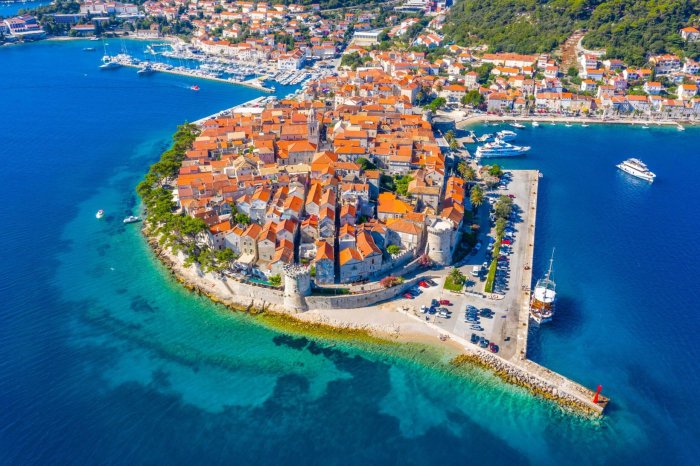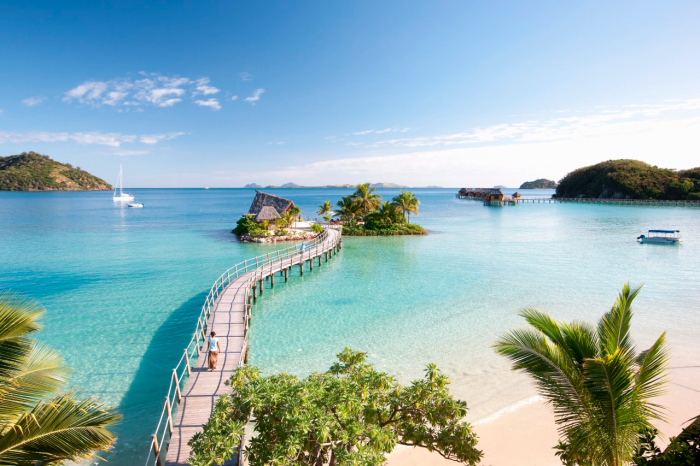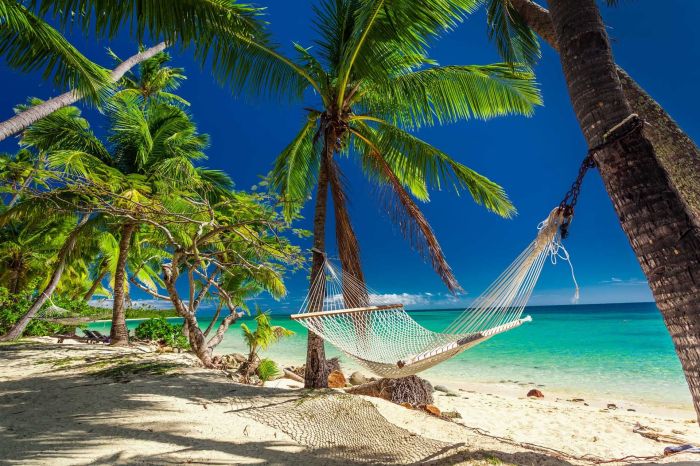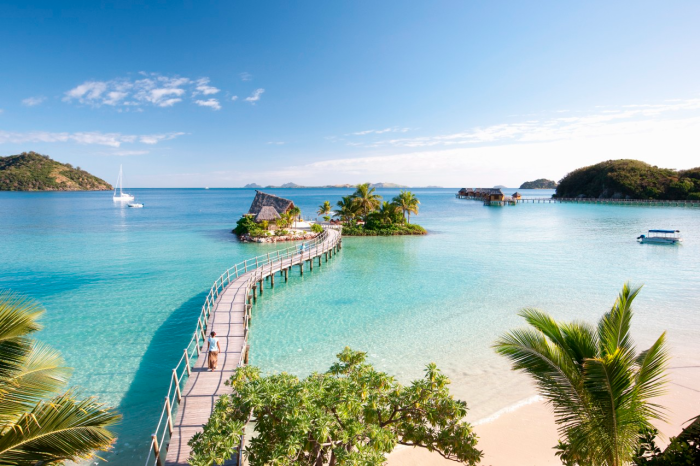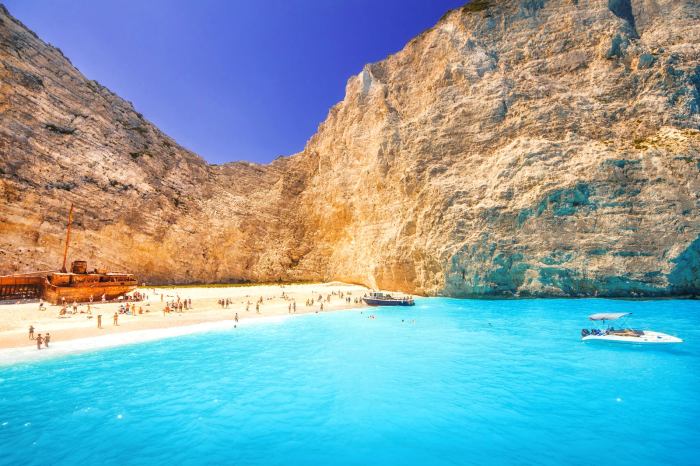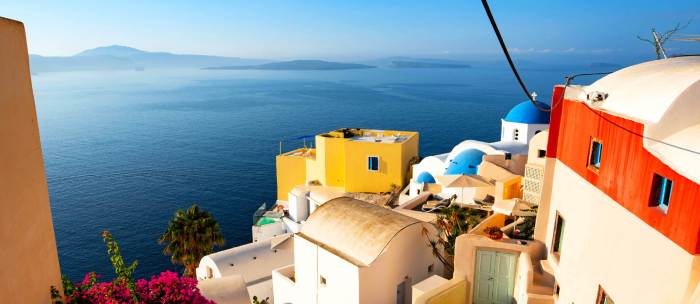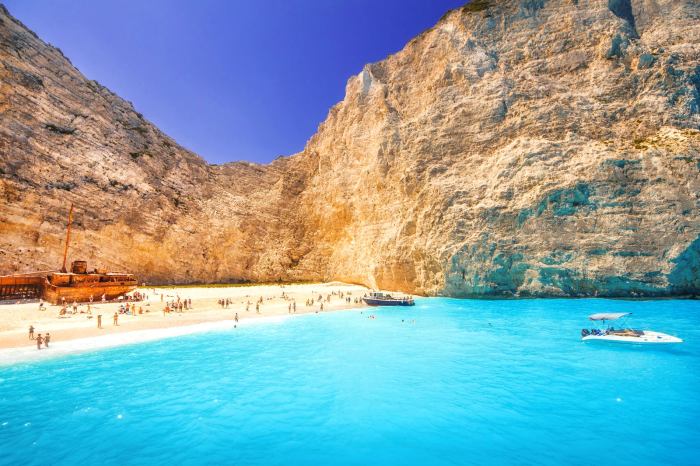Croatia island hopping planning is key to crafting an unforgettable Adriatic adventure. Imagine turquoise waters, sun-drenched beaches, and charming coastal towns – all within easy reach. This comprehensive guide will walk you through the entire process, from choosing the perfect islands to budgeting for your trip. We’ll delve into the best time to visit, different accommodation options, delicious local cuisine, and exciting activities to make your Croatian island hopping experience truly special.
From bustling ports to secluded coves, Croatia’s islands offer diverse experiences. Whether you crave relaxation, adventure, or cultural immersion, this guide will help you plan your perfect island hopping itinerary.
Introduction to Croatian Island Hopping
Croatia’s stunning coastline, dotted with hundreds of islands, offers a unique and unforgettable experience. Island hopping provides a way to explore the diverse beauty of the Adriatic Sea, from secluded coves to bustling harbor towns. The archipelago’s rich history and vibrant culture are interwoven with the breathtaking natural scenery, making it an ideal destination for those seeking a memorable vacation.Island hopping in Croatia allows travelers to experience a variety of environments, from the rugged beauty of the mainland islands to the tranquil charm of the smaller islets.
It offers a dynamic blend of relaxation, exploration, and cultural immersion. The best time to experience this journey is during the shoulder seasons, balancing pleasant weather with manageable crowds.
Best Time for Island Hopping
The ideal time for island hopping in Croatia is during the shoulder seasons, spring (April-May) and autumn (September-October). These periods offer pleasant temperatures, fewer crowds than the peak summer months, and often lower prices. Spring offers blossoming landscapes and warmer days perfect for outdoor activities. Autumn delivers vibrant colors and comfortable temperatures, ideal for leisurely explorations. While summer (June-August) is popular for its warm weather and high tourist volume, the shoulder seasons provide a delightful balance of both.
Summer crowds can lead to higher prices and potentially longer wait times for ferry services.
Types of Croatian Islands
Croatia’s islands offer a diverse range of experiences. The larger islands, like Hvar and Korcula, boast vibrant towns, bustling harbors, and ample amenities. These islands are well-connected by ferries and offer a variety of accommodations, dining options, and activities. Smaller islands, often with picturesque villages and secluded beaches, are perfect for those seeking tranquility and a more intimate experience.
The Kornati archipelago, with its numerous small islands and stunning coves, provides a unique landscape for exploring. The Dalmatian Islands feature a mixture of both large and small islands, reflecting the region’s varied charm.
Typical Activities
Island hopping in Croatia revolves around a blend of relaxation and exploration. Swimming in crystal-clear waters, sunbathing on pristine beaches, and enjoying the vibrant atmosphere of coastal towns are quintessential experiences. Exploring historic sites, like ancient castles or churches, is also a significant part of the journey. Boat tours to hidden coves, kayaking or paddleboarding adventures, and indulging in local cuisine are also highly recommended.
The diverse activities cater to different interests and preferences, ensuring a fulfilling experience for every visitor.
Historical Context
Croatia’s island hopping history is deeply intertwined with the region’s maritime tradition. For centuries, the islands served as vital trading hubs, connecting various parts of the Mediterranean. The architecture of many island towns reflects this rich history, with buildings that have stood the test of time and tell stories of past maritime activities and trade routes. The islands’ strategic location has influenced their development, making them an integral part of Croatian history and culture.
Planning Your Croatian Island Hopping Trip
Planning a Croatian island hopping adventure is an exciting process, filled with the thrill of discovery and the anticipation of beautiful scenery. This journey involves careful consideration of various factors to ensure a smooth and enjoyable experience. From choosing the right islands to selecting suitable transportation and managing your budget, meticulous planning is key.Island hopping in Croatia is a fantastic way to experience the diverse beauty of the Adriatic coast.
Different islands offer varying experiences, from bustling towns and lively nightlife to serene beaches and tranquil coves. Understanding your preferences for relaxation, adventure, or cultural immersion will guide your island selection.
Selecting Your Island Destinations
Choosing the islands that best match your preferences is crucial for a fulfilling island-hopping experience. Consider whether you prioritize relaxation, adventure, or a blend of both. Islands like Hvar and Brač are known for their vibrant nightlife and bustling atmosphere, while smaller islands like Korcula or Mljet offer a more laid-back and tranquil ambiance. Research the unique attractions and activities each island provides to match your interests.
For example, consider visiting Mljet National Park for its stunning nature reserves, or explore the historic towns and charming harbors of Korcula.
Transportation Considerations
Ferries are the primary mode of transportation between Croatian islands. Choosing the right ferry company and considering the travel time between destinations is essential. The speed and comfort of the ferry, along with its route and schedule, will significantly impact your trip. For example, some ferry companies offer express services that can save considerable time. Also, research the ferry schedules and routes to ensure you can comfortably travel between the islands you have selected.
Budgeting for Your Trip, Croatia island hopping planning
Creating a realistic budget is crucial for a successful trip. Accommodation, food, and activities can vary significantly depending on the time of year and the specific islands you choose. Factor in costs for ferry tickets, accommodation, meals, and any planned excursions. For example, peak season will likely have higher costs for ferries, accommodation, and dining compared to the shoulder season.
Consider setting aside a contingency fund to cover unforeseen expenses.
Booking Ferries and Accommodation
Booking ferries and accommodation in advance, especially during peak season, is highly recommended. This can help you secure the best deals and avoid potential last-minute disappointment. Booking ferries and accommodation online is a convenient option, offering a wide range of choices and competitive prices. Websites specializing in Croatian ferry bookings can assist in finding the most suitable options.
Ferry Company Comparison
| Ferry Company | Services Offered | Routes | Pricing |
|---|---|---|---|
| Jadrolinija | Extensive network, various types of vessels (speedboats, ferries) | Numerous routes connecting major islands | Generally competitive, varies by route and season |
| Catamaran Lines | Fast and comfortable travel, often with onboard amenities | Focus on connecting major destinations | Generally higher than traditional ferries, but faster |
| Other Companies | Local ferry companies may offer specific routes or deals | Island-specific connections | Pricing can be variable |
This table provides a basic comparison of ferry companies. Detailed information on specific services, routes, and pricing can be found on their official websites.
Accommodation Options on Croatian Islands: Croatia Island Hopping Planning
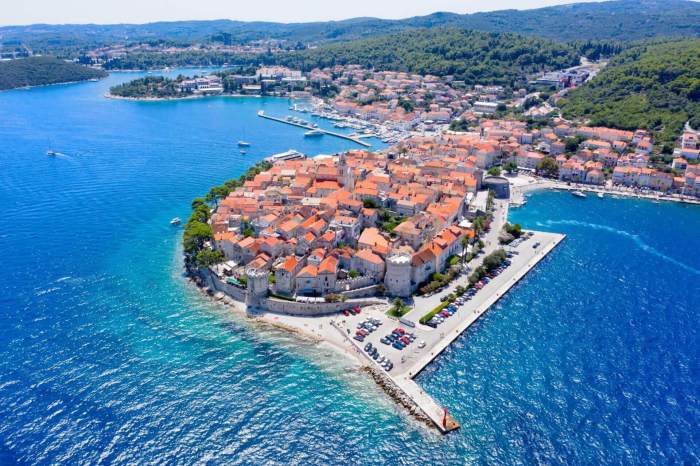
Choosing the right accommodation is crucial for a memorable island-hopping adventure in Croatia. The options range from budget-friendly guesthouses to luxurious villas, catering to diverse needs and preferences. Understanding the different types of accommodation available and their associated pros and cons is key to planning a trip that fits your budget and travel style.
Different Accommodation Types
Various accommodation types are available across the Croatian islands, each offering a unique experience. Hotels provide a structured environment with amenities like restaurants, pools, and room service. Apartments and guesthouses offer more independence and a local feel, often with kitchen facilities. Finding the right balance between convenience and personal space is vital.
Budget-Friendly Options
Budget-conscious travelers can find excellent value in guesthouses and smaller family-run hotels. These often offer basic but comfortable rooms at competitive prices. Look for guesthouses in smaller towns or villages for the most affordable rates. For example, a simple guesthouse on Hvar Town might cost around €30-€50 per night for a double room, while a similar accommodation on a less-touristed island might be even cheaper.
Planning my Croatia island hopping adventure is super exciting! I’m picturing picturesque coves and delicious seafood. To unwind before the trip, I’m seriously considering booking a luxurious cruise, like the aman new york new luxury cruise hudson river , to experience the beauty of the Hudson River. Now back to meticulously mapping out the best Croatian island hopping routes!
Mid-Range Accommodations
Mid-range options provide a good compromise between price and amenities. These might include larger hotels with more features, apartments in well-located areas, or charming boutique hotels. For example, a mid-range hotel on Brač Island might include a pool and breakfast, costing around €60-€100 per night for a double room.
Luxury Accommodations
For a truly luxurious experience, villas and high-end hotels offer a lavish retreat. These often feature private pools, stunning views, and personalized service. On the Dalmatian coast, some luxury hotels boast stunning coastal locations, offering premium amenities like spa treatments and private dining. Consider a villa rental on Hvar for a more secluded and spacious experience, potentially costing €200 or more per night.
Hotel vs. Apartment vs. Guesthouse
The choice between hotels, apartments, and guesthouses depends on your priorities. Hotels offer convenience and amenities but may lack the flexibility of an apartment. Apartments provide more space and kitchen facilities, allowing for self-catering and independence. Guesthouses offer a more local experience and often provide a warm welcome.
Planning my Croatia island hopping adventure has me thinking about safety precautions. Checking out expert tips on the best travel safety products is a must, like those recommended by security experts here. From sturdy backpacks to reliable navigation apps, I’m making sure I’m well-prepared for all the amazing Croatian islands I’ll be exploring.
Pros and Cons of Specific Island Accommodations
The best accommodation choices depend on the specific island. For example, Hvar Town offers a range of hotels and apartments catering to various budgets, while Vis offers a more diverse range of options including guesthouses and apartments in quieter locations. Island location, seasonality, and popularity will influence availability and prices. Consider factors such as proximity to beaches, restaurants, and attractions when selecting your accommodation.
Comparison Table of Accommodation Options
| Accommodation Type | Pricing (approx. € per night) | Amenities | Location |
|---|---|---|---|
| Budget Guesthouse | 30-50 | Basic rooms, shared facilities | Often in smaller towns |
| Mid-Range Hotel | 60-100 | Pool, breakfast, some restaurants | Central locations or near beaches |
| Luxury Villa | 200+ | Private pool, stunning views, personalized service | Often secluded locations |
| Apartment | 50-150 | Kitchen, living space, more space | Various locations |
Food and Drink Experiences on the Islands
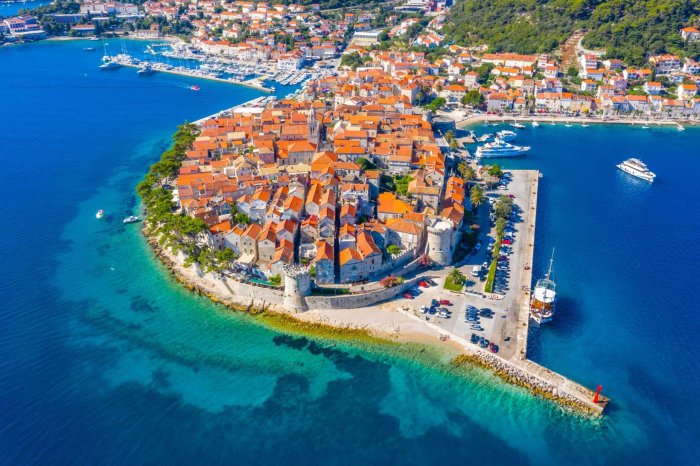
Croatia’s islands offer a delightful culinary journey, blending traditional Croatian flavors with international influences. The freshest seafood, coupled with hearty home-style dishes, creates a unique gastronomic experience. From bustling waterfront restaurants to cozy seaside cafes, there’s a place to savor every moment.
Traditional Croatian Cuisine and Local Delicacies
Croatian cuisine is rooted in simple, fresh ingredients. Expect hearty meals featuring lamb, pork, and poultry, often accompanied by rich sauces and flavorful sides. Local delicacies like “pršut” (smoked ham), “štrukli” (savory pastries), and “paški sir” (cheese from the island of Pašman) are must-tries. These dishes reflect the island’s agricultural bounty and culinary heritage.
International Food Options
While traditional Croatian cuisine is prominent, international options are readily available on the islands. From Italian pasta dishes to German sausages, visitors can find a range of global flavors to satisfy their cravings. This ensures that diverse palates are catered to. Restaurants often feature dishes adapted to local tastes, showcasing a fusion of culinary traditions.
Local Restaurants, Cafes, and Bars
Tourist-frequented restaurants, cafes, and bars are often situated in picturesque locations along the coast. They typically offer a vibrant atmosphere, perfect for enjoying a meal or drink while taking in the stunning views. These establishments cater to a diverse clientele, reflecting the islands’ popularity as tourist destinations. The ambiance often blends modern comforts with traditional elements.
Restaurants Specializing in Seafood, Traditional Croatian Dishes, and International Cuisines
- Seafood Restaurants: Many restaurants along the coast specialize in fresh seafood, offering dishes like grilled fish, seafood pasta, and various shellfish options. The quality and freshness of the seafood are often a highlight, showcasing the abundance of the Adriatic Sea. Look for restaurants with direct access to the harbor for the freshest catches.
- Traditional Croatian Dishes: For a taste of authentic Croatian cuisine, seek out restaurants known for their traditional dishes. These restaurants often feature family recipes and local specialties. Expect hearty portions and flavorful ingredients.
- International Cuisines: From pizza places to burger joints, international cuisine is readily available. The options cater to different preferences, offering a chance to explore global flavors alongside the Croatian delights. The variety of international restaurants ensures there’s something for everyone.
Local Beverages
Croatian islands offer a variety of beverages, including local wines, beers, and fruit juices. The availability of fresh juices and fruit drinks often complements the fresh seafood. Local wines, often produced on the islands, provide a unique taste experience. Also, expect a good selection of imported beverages, appealing to various preferences.
Restaurant Comparison Table
| Restaurant Name | Specialties | Ambiance | Pricing |
|---|---|---|---|
| Restaurant “Dalmatinski” | Fresh seafood, traditional Croatian dishes | Rustic, waterfront | Mid-range |
| Cafe “Mediteran” | Italian cuisine, coffee, pastries | Cozy, seaside | Budget-friendly |
| Restaurant “Adriatic Breeze” | International cuisine, pizzas, burgers | Modern, lively | Mid-range to high |
Activities and Experiences on the Croatian Islands
Exploring the Croatian islands is more than just sunbathing; it’s about immersing yourself in the unique beauty and culture of each destination. From the dramatic cliffs of Hvar to the serene bays of Brač, there’s a plethora of experiences waiting to be discovered. This section will delve into the diverse range of activities, from popular choices like swimming and hiking to hidden gems and cultural explorations.The islands offer a fantastic mix of relaxation and adventure.
Planning my Croatia island hopping adventure is getting super exciting! I’m researching ferries and accommodation, but also thinking about the best beaches in Los Angeles. I’ve got a little bit of a wanderlust for those sun-drenched shores and am totally inspired by the options available; especially when comparing them to the stunning beaches I’ll find in Croatia. Ultimately, the amazing beaches of Croatia are the real goal, but I’m keeping a close eye on best beaches in los angeles for inspiration.
Now, back to booking those ferries!
Whether you prefer lounging on pristine beaches, scaling rugged mountains, or delving into local traditions, Croatia’s islands have something to captivate every traveler.
Popular Activities: Swimming, Sunbathing, and Hiking
The Croatian islands are renowned for their stunning beaches. Crystal-clear waters and golden sands provide idyllic settings for swimming and sunbathing. Many islands boast secluded coves perfect for a tranquil escape. Beyond the beaches, hiking trails wind through lush landscapes, offering breathtaking views of the coastline and hidden villages. Hiking is a fantastic way to connect with the natural beauty of the islands and discover hidden gems.
For example, the trails on Brač Island offer panoramic vistas of the Adriatic Sea.
Exploring the Islands: Discovering Hidden Gems and Local Culture
Beyond the well-trodden paths, the islands hold a treasure trove of hidden gems. Exploring smaller villages and hidden coves reveals a different side of the islands, offering authentic encounters with local life. Discovering local markets and shops allows you to interact with the community and find unique souvenirs. The islands’ rich history is reflected in their architecture and historical sites, adding another layer to the exploration.
For example, the historic towns of Korcula and Hvar boast remnants of medieval and Venetian influences.
Cultural Activities: Visiting Historical Sites and Attending Local Events
The islands are steeped in history, with numerous historical sites showcasing centuries of architectural and cultural influences. Visiting these sites offers insights into the past and provides a deeper understanding of the region’s heritage. The islands also host various local events throughout the year, celebrating traditions and showcasing local talent. These events provide a vibrant cultural experience, allowing you to connect with the local community and embrace their traditions.
Attend a local festival, for instance, to experience traditional Croatian music and dance.
Boat Tours, Excursions, and Other Activities
Numerous boat tours, excursions, and activities are available to enhance your island hopping experience. These range from day trips to nearby islands to longer cruises exploring the archipelago. Many operators offer customizable tours to cater to specific interests and preferences. Consider booking tours in advance, especially during peak season. For example, a boat tour to the Pakleni Islands might include snorkeling and swimming opportunities.
Watersports on the Croatian Islands
The crystal-clear waters of the Adriatic Sea are perfect for a range of watersports. Options include kayaking, paddleboarding, and sailing. These activities provide opportunities to explore the coastline from a different perspective and enjoy the stunning scenery. Watersports are a great way to experience the islands’ natural beauty while getting active. For example, kayaking tours can be customized to explore secluded coves and hidden beaches.
Comparison Table of Boat Tours and Activities
| Activity | Duration | Cost (approx.) | Destinations |
|---|---|---|---|
| Day Trip to Hvar Town | Full Day | €50-€100 per person | Hvar Town, surrounding islands |
| Kayaking Tour around Brač | Half Day | €30-€50 per person | Brač Island, specific coves |
| Sunset Cruise on Mljet | Few Hours | €40-€80 per person | Mljet National Park, surrounding waters |
| Boat Tour to Blue Cave | Full Day | €60-€120 per person | Bisevo Island, Blue Cave |
Note: Prices are approximate and may vary based on the operator, season, and number of people.
Practical Considerations for Island Hopping
Planning your Croatian island hopping adventure goes beyond choosing your accommodation and delectable food. Navigating the practicalities—from the best time to visit to necessary documents—is crucial for a smooth and enjoyable trip. Understanding local customs and safety precautions will enhance your experience and ensure a memorable journey.Croatian islands offer stunning beauty throughout the year, but the best time to visit is dependent on your preferences.
Summer (June to August) brings the highest temperatures and most crowds, ideal for beach lovers and those seeking vibrant nightlife. Spring (April to May) and autumn (September to October) offer pleasant weather, fewer crowds, and a chance to explore at a more relaxed pace. Winter (November to March) is quieter but may experience cooler temperatures and fewer services available on some islands.
Best Time to Visit
The optimal time to visit depends on your priorities. Summer offers peak season activity, but higher prices and larger crowds. Spring and autumn provide a pleasant balance of good weather and fewer tourists. Winter, while potentially colder, allows for tranquil exploration and potentially lower prices.
Necessary Documents and Visas
Valid passports are essential for all travelers. For EU citizens, a valid passport is often sufficient. Non-EU citizens should check visa requirements well in advance, as these vary significantly. Specific requirements may be in place depending on the length of your stay and your nationality.
Local Customs and Etiquette
Croatians are generally welcoming and friendly. Respecting local customs is vital for a positive experience. Dress modestly when visiting religious sites, and be mindful of local traditions. Learn a few basic Croatian phrases, as this demonstrates respect for the culture. Tipping is customary in restaurants and cafes, but not expected in other settings.
Health and Safety Precautions
Croatia is generally safe, but basic precautions are always recommended. Travel insurance is highly recommended to cover medical emergencies, lost luggage, and unforeseen circumstances. Ensure you have necessary vaccinations and consult your doctor about recommended health precautions. Be aware of your surroundings and take appropriate safety measures while exploring, especially in remote areas.
Travel Insurance and Vaccinations
Travel insurance is a crucial investment. It covers unexpected medical expenses, lost belongings, and trip cancellations. Consult your doctor about necessary vaccinations and health precautions for Croatia. Ensure your vaccinations are up-to-date before your trip.
Useful Phrases in Croatian
Knowing a few basic Croatian phrases can significantly enhance your experience. Common phrases such as “hello” (zdravo), “thank you” (hvala), “please” (molim), and “goodbye” (doviđenja) are appreciated. Knowing how to ask for directions and order food can also make your trip smoother.
Zdravo – HelloHvala – Thank youMolim – PleaseDoviđenja – Goodbye
Important Documents and Necessary Information
| Document | Details |
|---|---|
| Passport | Valid for at least six months beyond your travel dates. |
| Visa (if required) | Obtain necessary visas well in advance. |
| Travel Insurance | Essential for medical emergencies, lost luggage, and trip cancellations. |
| Copies of Important Documents | Keep copies of your passport, visa, and travel insurance details separate from the originals. |
| Emergency Contact Information | Provide emergency contact details to someone back home. |
| Flight Information | Have your flight details readily available, especially for connecting flights. |
| Accommodation Information | Confirm accommodation details and contact information for your bookings. |
Island Hopping Itineraries
Planning your Croatian island hopping adventure involves choosing the perfect itinerary. This crucial step dictates the pace, experiences, and overall enjoyment of your trip. Different durations allow for various levels of exploration, from skimming the surface to delving deep into the Croatian archipelago. Consider your interests, time constraints, and budget when selecting your itinerary.A well-structured itinerary balances relaxation, exploration, and cultural immersion, allowing you to savor the beauty and charm of each island.
The diverse landscapes and activities offer something for every traveler, from sun-worshippers to history buffs and outdoor enthusiasts.
Sample Itineraries for Various Durations
Different durations of stay allow for varying degrees of exploration. Five days provide a taste of the islands, while seven and ten days offer a more comprehensive experience. The itineraries below suggest possible routes and activities, but remember these are merely starting points – feel free to customize them based on your preferences.
Five-Day Itinerary: A Taste of the Adriatic
This itinerary focuses on the central Dalmatian islands, offering a blend of relaxation and sightseeing. It prioritizes ease of travel and maximum exposure to the islands’ beauty.
- Day 1-2: Hvar. Explore the historic town, relax on the beaches, and indulge in local cuisine.
- Day 3-4: Brač. Visit the famous Zlatni Rat beach, hike to the top of Vidova Gora for panoramic views, and experience the island’s charming villages.
- Day 5: Departure. Enjoy a final Croatian meal before heading to the airport or ferry terminal.
Seven-Day Itinerary: Exploring the Kornati Archipelago
This itinerary delves into the stunning Kornati National Park, famous for its numerous islets and dramatic coastline. Expect a more active pace and a focus on natural beauty.
- Day 1-2: Korcula. Explore the historic town, relax on the beaches, and enjoy the local cuisine.
- Day 3-5: Kornati National Park. Take a boat trip through the Kornati islands, swim in the crystal-clear waters, and enjoy the stunning scenery. Consider kayaking or other water activities.
- Day 6: Mljet. Discover the national park with its saltwater lakes and lush vegetation. Visit the charming towns.
- Day 7: Departure. Enjoy a final Croatian meal before heading to the airport or ferry terminal.
Ten-Day Itinerary: A Deep Dive into Croatian Islands
This itinerary covers a wider range of islands, offering a more comprehensive exploration of the Croatian archipelago. It incorporates cultural immersion, historical sites, and scenic landscapes.
- Day 1-3: Dubrovnik. Explore the historic city walls, visit the Franciscan monastery, and experience the vibrant nightlife.
- Day 4-6: Hvar. Relax on the beaches, explore the historic town, and enjoy the local cuisine.
- Day 7-9: Vis. Explore the charming villages, relax on the beaches, and enjoy the unique island atmosphere.
- Day 10: Departure. Enjoy a final Croatian meal before heading to the airport or ferry terminal.
Comparing and Contrasting Itineraries
A five-day itinerary offers a quick overview of several islands, whereas a seven-day itinerary allows for a deeper exploration of the central Dalmatian islands or the Kornati Archipelago. A ten-day itinerary provides the most comprehensive experience, visiting diverse locations and immersing you in Croatian culture and history.
Example Itineraries Table
| Itinerary | Islands Visited | Activities | Duration |
|---|---|---|---|
| Five-Day | Hvar, Brač | Beach relaxation, sightseeing, local cuisine | 5 days |
| Seven-Day | Korcula, Kornati National Park, Mljet | Boat trips, swimming, kayaking, exploring towns | 7 days |
| Ten-Day | Dubrovnik, Hvar, Vis | Exploring historical sites, relaxing on beaches, exploring villages | 10 days |
Wrap-Up
This guide to Croatia island hopping planning equips you with the knowledge to craft a personalized and memorable trip. By considering factors like the best time to visit, transportation options, and diverse accommodation choices, you can tailor your island hopping adventure to perfectly suit your interests and budget. So, get ready to explore the breathtaking beauty of the Croatian islands!
